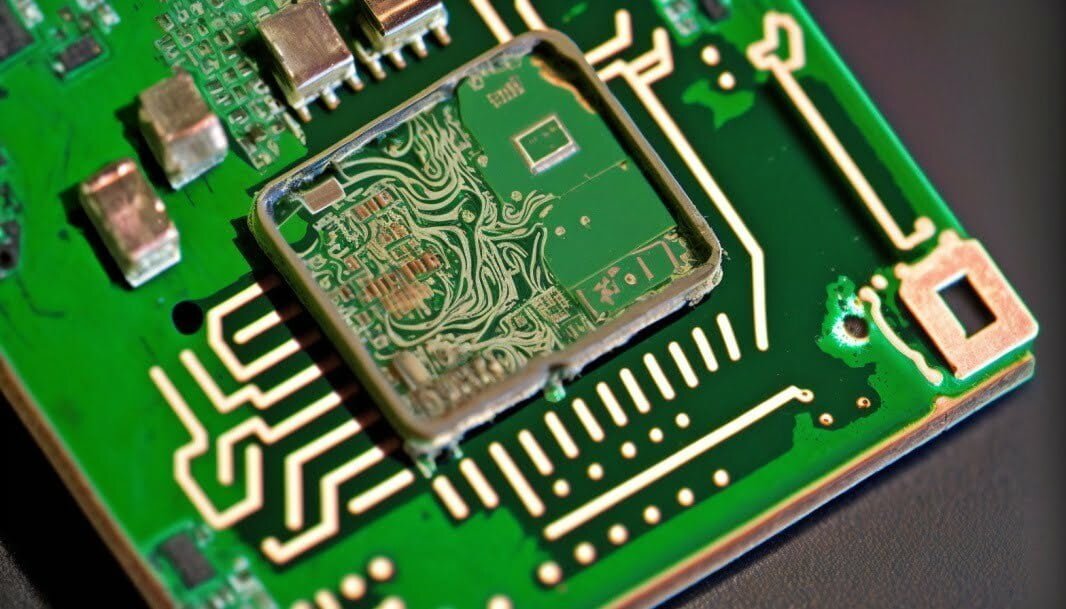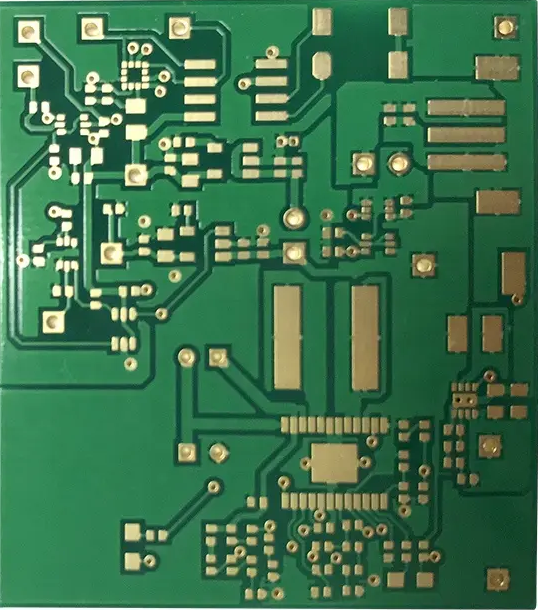Categories
Recent Posts
When it comes to the intricate world of electronics, the unsung hero that silently safeguards your devices' integrity is the solder mask. Though often overlooked, the solder mask is a crucial element in the manufacturing process of printed circuit boards (PCBs).
What is Solder Mask?
Before we dive into the "why" of solder mask, let's start with the "what." Solder mask, also known as solder resist or solder stop mask, is a protective layer applied to a PCB's surface. It is typically made of a polymer material, such as epoxy, and is applied as a thin coating. The key purpose of the solder mask is to insulate and protect certain areas of the PCB while allowing for precise soldering where necessary.

The Functions of Solder Mask
1. Insulation
One of the primary functions of solder mask is to insulate the conductive traces on the PCB. These traces are the copper pathways that carry electrical signals between various components on the board. Without proper insulation, these traces could come into contact with one another, resulting in short circuits and potential device failure. Solder mask provides a protective barrier, preventing unintended electrical connections.
2. Component Protection
Electronic devices face a variety of environmental challenges, from moisture and dust to chemical contaminants. These environmental factors can corrode exposed metal traces and components, leading to malfunction and reduced device lifespan. Solder mask acts as a shield, protecting the exposed elements on the PCB from these hazards and ensuring the device's long-term reliability.
3. Solder Dams
In the world of electronics assembly, soldering is a critical step. Components like resistors, capacitors, and integrated circuits need to be securely attached to the PCB. Solder mask defines specific areas on the PCB known as solder pads or solder dams where soldering is required. By leaving these areas uncovered, solder mask ensures that the solder adheres correctly, forming strong and reliable connections.
4. Visual Clarity
Beyond its functional aspects, solder mask also contributes to the visual appeal of a PCB. By providing a consistent color and finish, it enhances the board's appearance, making it easier for engineers, technicians, and quality control personnel to identify components and trace the paths. The visual clarity offered by solder mask is not just cosmetic; it aids in efficient inspection and debugging processes.
The Colors of Solder Mask
Solder masks come in various colors, with green being the most common choice. However, the color of the solder mask can be customized based on specific requirements or preferences. Different colors are not merely an aesthetic choice; they can serve practical purposes in certain applications.
1. Green: Green solder masks are the most prevalent and are often associated with standard PCBs. They are cost-effective and provide good visual contrast for easy inspection.
2. Red: Red solder masks are commonly used in aerospace and military applications. They denote high-reliability and are often associated with mission-critical electronics.
3. Blue: Blue solder masks are less common but can be used for differentiation and branding purposes. They offer a distinct appearance.
4. Black: Black solder masks are associated with high-end consumer electronics, where aesthetics and a premium look are essential. They create a sleek and modern appearance.
5. White: White solder masks are used for specific applications where high visibility is required for inspection purposes.

The Application Process
Applying solder mask to a PCB is a meticulous process that requires precision and expertise. There are two primary methods for applying solder mask: the silkscreen method and the photoimaging method.
Silkscreen Method
The silkscreen method involves applying solder mask as a liquid ink through a stencil, much like screen printing. This method is suitable for single or double-sided PCBs with less complex designs. The solder mask is carefully spread over the PCB's surface, and excess mask is removed, leaving only the desired areas coated. This method is cost-effective and efficient for small-scale production.
Photoimaging Method
The photoimaging method is the more advanced and precise technique. It is commonly used for multilayer PCBs and intricate designs. In this process, a photosensitive liquid solder mask is applied to the PCB's surface. A UV light source, along with a photomask, is used to expose the areas where solder mask is needed. After exposure, the unexposed solder mask is developed and removed, leaving behind the precisely defined protective layer.
After applying the solder mask, it undergoes a curing or hardening process to ensure its durability and adherence to the PCB surface. Once cured, the PCB is ready for component placement and soldering.
Applications and Industries
Solder mask is a versatile component that finds applications in a wide range of industries and products. Here are some notable applications and industries where solder mask plays a crucial role:
Consumer Electronics
The consumer electronics industry relies heavily on solder mask for its PCBs. From smartphones and laptops to gaming consoles and wearables, solder mask not only ensures the functionality and reliability of these devices but also contributes to their aesthetics.
Automotive
Modern vehicles are equipped with a plethora of electronic systems, from engine control units to infotainment systems. Solder mask in automotive PCBs is essential to protect against vibrations, temperature variations, and moisture, ensuring the longevity of critical components.
Aerospace and Defense
Aerospace and defense applications demand the highest levels of reliability and performance. Solder mask is used in mission-critical systems and military equipment to safeguard against harsh environments and ensure the durability of PCBs.
Medical Devices
In the medical industry, where precision and reliability are paramount, solder mask plays a vital role in the manufacturing of medical devices. Whether it's a diagnostic instrument or a life-saving medical implant, solder mask ensures consistent performance.
Industrial Equipment
Manufacturing and industrial equipment require PCBs that can withstand demanding conditions. Solder mask is used to protect PCBs from exposure to dust, chemicals, and extreme temperatures, ensuring uninterrupted operation.
Telecommunications
The world of telecommunications relies on PCBs for network infrastructure, routers, and communication devices. Solder mask ensures the reliability and longevity of these essential components.
Green Technology
With the growing focus on sustainability and energy efficiency, green technology applications often incorporate PCBs with solder mask. From solar power inverters to electric vehicle chargers, these PCBs are designed to perform reliably in eco-friendly solutions.
The widespread application of solder mask underscores its versatility and importance across various industries. It's not limited to a single niche but serves as a fundamental component in the electronics that power our modern world.
Related Posts:
1. The Precautions of Circuit Board Soldering
2. Custom PCB-The Ultimate Guide
3. How to Choose PCB Suppliers?
Welcome to consult our sales engineer with BOM list and Gerber file